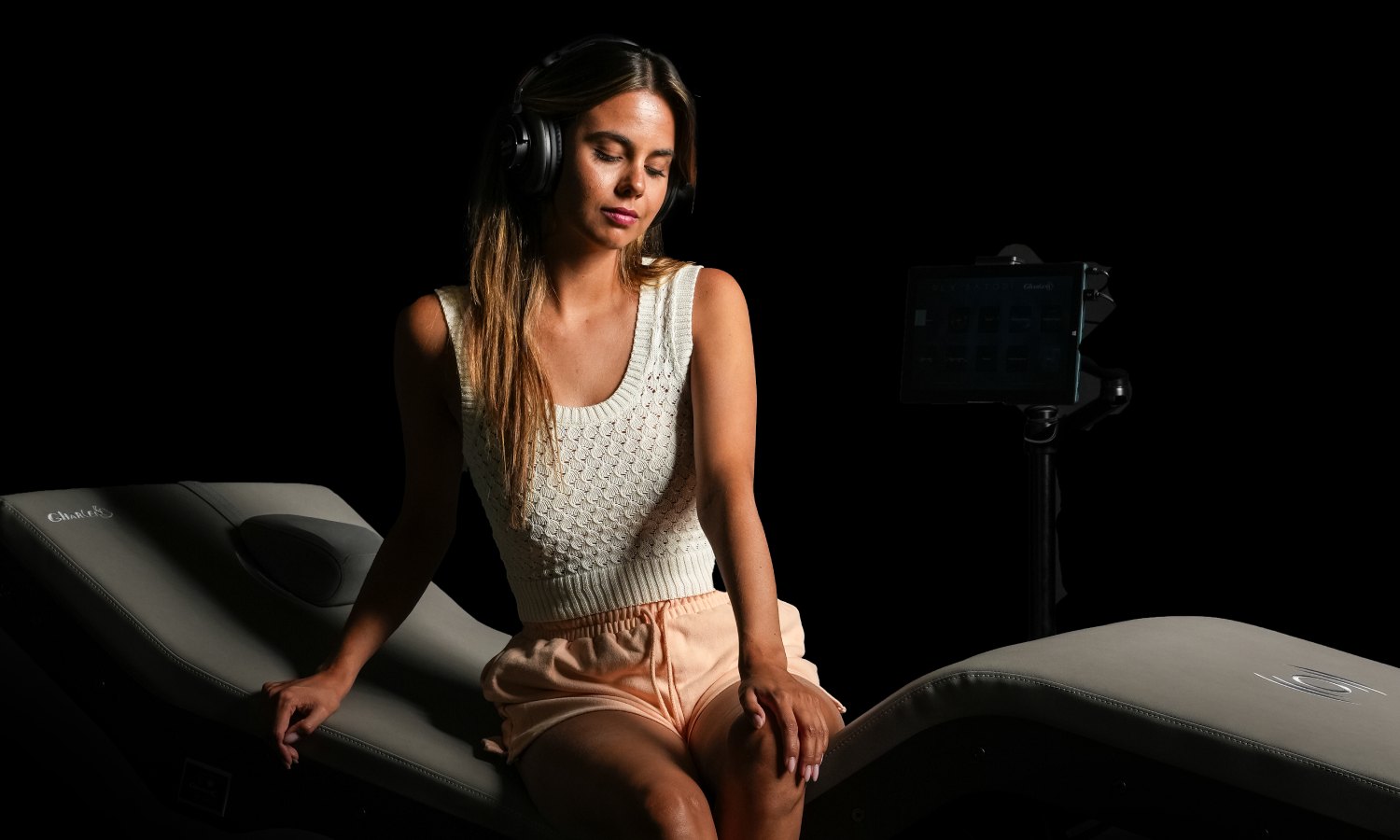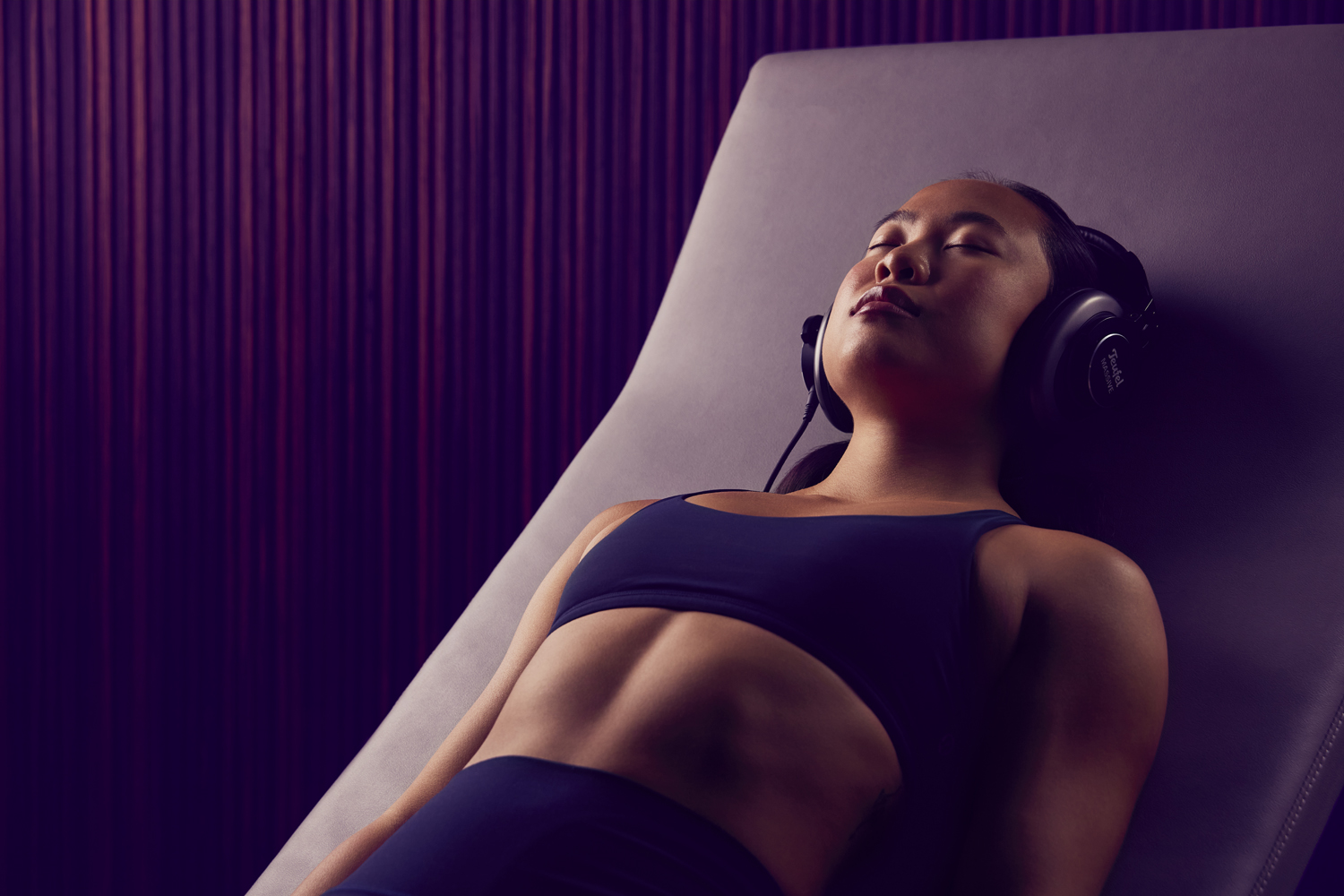- Linkedin Share
- Twitter Tweet
- Email Share
- Copy link Copy link Copied to clipboard
Sleep is not just about how long you rest, but how deeply. In an age of constant stimulation, quality sleep is becoming harder to achieve — and easier to disrupt. One simple, science-backed tool that can support more restorative sleep is sound — specifically, white, pink and brown noise.
Each of these “colours” of noise offers unique benefits for the brain and nervous system. Understanding the difference between them can help you choose the right kind of sound to create an ideal sleep environment.
How Sound Affects Sleep
Different sound profiles influence the brain’s perception of the environment. Consistent noise helps reduce micro-arousals — those small moments when the brain briefly wakes in response to changes in background sound. At the same time, low-frequency sounds can gently stimulate the parasympathetic nervous system, encouraging the body to shift into a rest-and-repair mode.
This relationship between sound and the nervous system is also reflected in vibroacoustic therapy, where low-frequency sound waves are delivered directly through the body using specialised equipment. While noise colours work through the ears, vibroacoustic therapy engages the body physically to support relaxation and sleep.
White Noise: For Blocking Distractions
White noise contains all audible frequencies at equal intensity, producing a consistent, neutral sound — similar to a fan or soft static. Its main strength is its ability to mask sudden environmental noise.
Best for:
- Sleeping in noisy environments
- Light sleepers prone to waking from small disturbances
- Establishing consistent sleep conditions when travelling
How it helps: White noise creates a stable auditory backdrop that prevents your brain from reacting to irregular sounds, helping you stay asleep longer.
Pink Noise: For Deep, Sustained Sleep
Pink noise includes the same range of frequencies as white noise but reduces the intensity of higher frequencies. This creates a softer, more natural sound — like rain, wind through trees or waves.
Best for:
- Falling asleep faster and staying asleep longer
- Improving sleep depth and quality
- Night time relaxation routines
How it helps: Research suggests pink noise can enhance slow-wave sleep — the deepest, most restorative stage. It promotes brainwave patterns associated with memory consolidation and physical recovery.
Brown Noise: For Grounding The Nervous System
Brown noise (also called red noise) further emphasises low frequencies. The result is a deep, rumbling sound reminiscent of distant thunder or a powerful waterfall.
Best for:
- Calming the body before bed
- Reducing stress or overstimulation
- Supporting sleep for people with anxiety or sensory sensitivity
How it helps: Brown noise can have a grounding, enveloping effect that supports a transition into rest — especially helpful for those who find it difficult to “switch off.”
Building A Sleep-Supportive Sound Routine
If you’re new to using sound for sleep, start by playing 20-30 minutes of noise during your evening wind-down. Many people find success letting it continue throughout the night at a low volume. Use headphones, a speaker or a white noise machine — whatever allows you to hear the full frequency range clearly without strain.
For those struggling with sleep difficulties or stress, integrating other sound-based therapies such as vibroacoustic sessions can offer further support.
Improving sleep doesn’t always require major lifestyle changes. Sometimes, it begins with simply changing what you hear.




